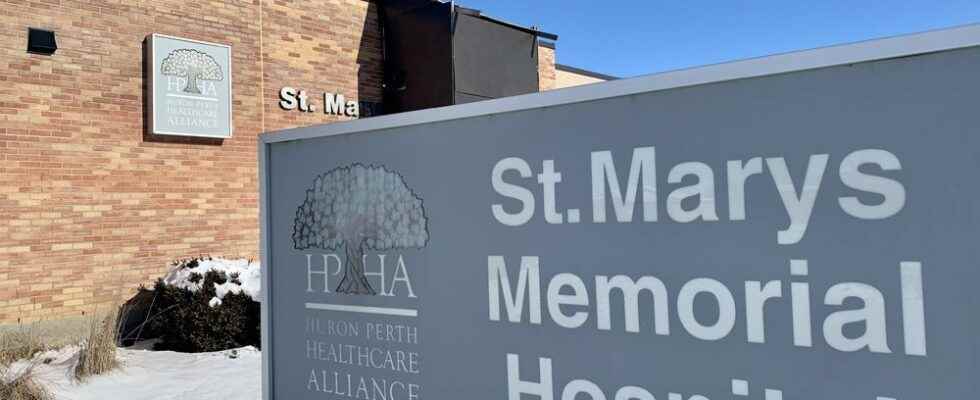Already battling long emergency room waits and temporary closings because of staffing issues, pressures on small-town Southwestern Ontario hospitals could worsen this fall, some observers warn.

Already battling long emergency room waits and temporary closings because of staffing issues, pressures on small-town Southwestern Ontario hospitals could worsen this fall, some observers warn.
Besides the health crisis affecting many Ontario hospitals, triggered by staffing shortages more than two and a half years into the pandemic, smaller hospitals – with fewer staff, and less bench strength to fall back on – may be more vulnerable to any resurgence in COVID- 19 this fall or winter or any run on demand if seasonal flu outbreaks return.
In the last week alone, three rural hospitals in St. Marys, Seaforth and Wingham were forced to temporarily close their emergency departments due to staffing shortages, an issue playing out across Ontario.
“All of our reductions have been related to the availability of staff, and in our case, it is primarily nursing staff, registered nurses,” said Karl Ellis, president and chief executive of the Listowel-Wingham Hospitals Alliance.
“What has happened post-COVID is it’s been very difficult to find temporary replacements for any of our staff that are off on leave,” he said, noting 45 workers at the Listowel and Wingham hospitals are on long-term leave.
Smaller hospitals also tend to have a smaller pool of staff, making it more challenging to keep emergency departments running when people are away, Ellis added.
-

St. Thomas hospital warns public of long ER waits, staff shortages
-

‘Long, hard summer’ looms in hospital ERs for exhausted staff, forced-to-wait patients: Doctor
The Huron Perth Healthcare Alliance operates hospitals in Clinton, Seaforth, St. Marys and Stratford. Its officials have had to reduce emergency room hours at many of its locations this summer, most recently by cutting overnight hours in St. Marys this week.
“It all really boils down to the fact that we have far more positions available than we have people, and it’s really hit hard in Ontario hospitals this summer,” said Andrew Williams, president and chief executive of the hospital group.
Temporary closings of emergency rooms and surging wait times in smaller hospitals provincewide could become the new norm heading into the fall and winter, health observers say, especially with the onset of respiratory illnesses and a possible resurgence of COVID-19.
“With the fall coming, we can expect probably an increase in illnesses while there’s people coming into the hospital or our staff,” Williams said. “Our (hospital) is doing a great job stepping forward, but we simply don’t have the number of people we need to appropriately and safely keep all our services going 24 hours a day, seven days a week.”
It’s a similar issue at some small-city hospitals in the region, such as the one in St. Thomas, whose emergency room volume is running upward of about 30 patients a day higher than its funded capacity.
“The hospital is experiencing higher visit volumes this year, with the demands on the hospital likely to increase during the fall and winter months because of illnesses that are associated with the cold weather conditions,” Craig Watkin, vice president of patient services and chief nursing executive at the St. Thomas Elgin General Hospital, wrote in an email.
Reduced access to emergency hospital services in rural and small-town areas becomes especially critical in the winter, when the weather can hamper what are sometimes already long travel distances to the nearest large medical centre.
“If those hospitals are not close enough to other places where there is an emergency department, that becomes a real issue in the winter,” said Doris Grinspun, chief executive of the Registered Nurses’ Association of Ontario.
Grinspun cautioned about a potential resurgence in both COVID-19 and the flu, pointing to a recent increase in cases in Australia as a “warning sign” for Ontario.
“People are not taking this seriously. People are living their lives as if the virus is gone, but the virus is not gone,” she said, adding she believes precautionary measures such as mandatory masking in schools and vaccination requirements should be brought back.
As for staffing backlogs, there are solutions, Grinspun said. For starters, the province could boost funding for more spots in university and college nursing programs and fast-track registration for the 26,000 internationally educated nurses here.
“All across this province, people want to go into nursing,” she said, noting a 70 per cent increase in applications to the nurse practitioner program.
Rural communities, in particular, could benefit significantly from more nurse practitioners, she noted.
“(They) could play a tremendous role because they have the authority, legislatively, to admit, transfer and discharge patients,” she said, noting many of the communities that could benefit are also short of doctors.
The Local Journalism Initiative is funded by the Government of Canada
